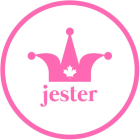Establish relatability with your audience by telling your brand’s story
Let us tell you a story…
Of how the very prospect of reading a story piqued your interest and made you read beyond the headline.
Throughout the history of humanity, stories have helped individuals and groups educate others, propagate ideas and communicate with each other either in their shared time or as legacy. Beginning with pictorial depictions and slowly evolving into complex oral, aural and written forms, storytelling has become as inevitable as the presence of the five senses.
With the advent of industry, products that bettered one’s lifestyle were created to sell to the masses as opposed to being exclusively a domain of the rich, the noble and the royal strata of society.
The latter half of the 20th century experimented with the way stories can be told to enrich the user experience and leave a lasting impact of the brand on its audience. Subliminal messaging in advertising and marketing became more of a norm to evoke a sense of need and urgency to purchase a product or subscribe for a service.
The 21st century has seen a paradigm shift in this approach. Rather than using psychology and sociology to sell a product which speaks to the need of necessities that fall under the umbrella of food, shelter and family, the science is now used to tap into the primal need to find a tribe. Humans are inherently tribal yet actively desire to be unique. We gravitate towards finding those that think like us, act like us, speak like us, and use or do things that we like to. It’s a paradox that no one can get out of.
Apple is the most successful example of selling the brand experience to an audience. The loyalty it evokes in its consumers perfectly encapsulates the modern branding phenomenon. While Apple’s seeds were firmly planted in the ideal of innovation and Steve Jobs spearheaded this belief for a long time, the 21st century rebranding of Apple has turned it into the Apple experience.
You take a bite off Apple, you become a part of Apple.
Even though Apple revolutionized technology in the previous decade, the greater part of the 2010s has put the spotlight on the Apple Event. Generally holding three to four events a year, in each season, Apple plans its products based on the events.
Rather than create a product and then use the event to launch it, the product is created to give the launch something to talk about. Which is why, even though there isn’t a great variation in the technology or function of the iPhone variants every year, Apple continues to branch out to newer customers. Humans connect with things they can relate to, and experiences are more relatable than technicalities and specifications, because emotion often supersedes logic, or amplifies the same.
This belief can be observed in gaming companies, movie spin-offs, franchises and their ilk. In 2013, GoPro launched the Be A Hero campaign. In order to sell their HERO cameras, they came up with the tagline, “There is a hero in all of us” and encouraged people from different professions and lifestyles to capture in first-person acts of heroism and adventure that resonated with its audiences, and then used the footage in its advertising campaign. The best example of this is the video titled GoPro: Fireman saves Kitten.
In the video, you see through the eyes of a fireman, and hear his breath as he enters a smoke-filled house and discovers an asphyxiated kitten and rescues it and within those couple minutes the audience experiences despair, pathos and elation at the sight and sound of a revived kitten meowing.
For GoPro, this is their brand story: the people who achieve extraordinary feats in a seemingly ordinary life.
More recently, Quebec’s Tourism Alliance launched the “Born to Let Go” campaign to promote tourism in the province, taking a documentary approach to its brand experience, selecting photographers and muralists and telling the story of the province across cities through their eyes, and through their voices. They show you what Quebec is, and you believe their version because it comes from the people, an authentic experience rather than a testimonial. It is a story, not a commercial.
What’s your story?
For a new brand, the brand story is a first chapter of a very long book. It is also a cold open, leading with action, showing rather than telling the audience what it is about. Easily divided in the three-part story structure, a new brand’s story must address the problems faced by its audience, and take them on a journey towards solving this problem, but while doing so also letting the audience connect with the brand, so that towards the end of the chapter the brand becomes a hero, and no hero exists without a following.
But what makes a hero outstanding and makes a legacy long lasting? Repetition, replication, and word of mouth. So, when telling your brand’s story, ensure that you repeat why your brand matters, and replicate it in your service, so that your story can be told by those who follow you as if it is their story.
So, what’s your story? We would love to know.
As for our story? We help you tell stories that last beyond a review, we help you tell the story of you.
